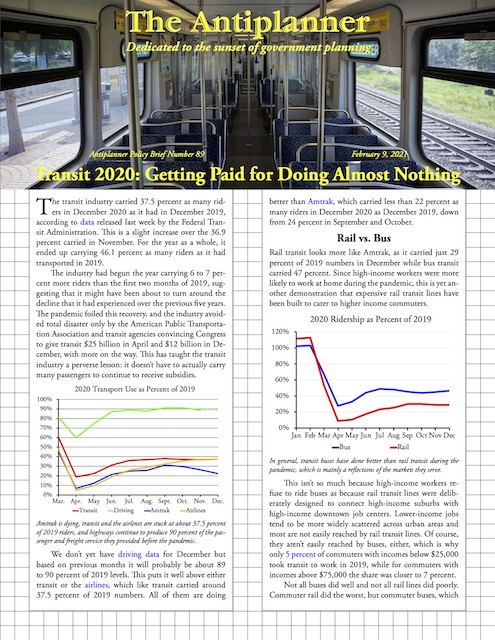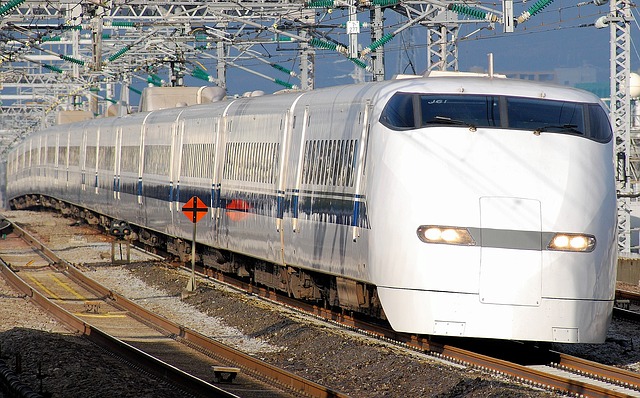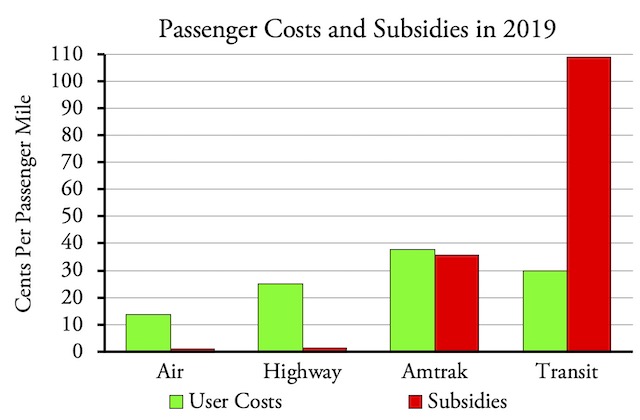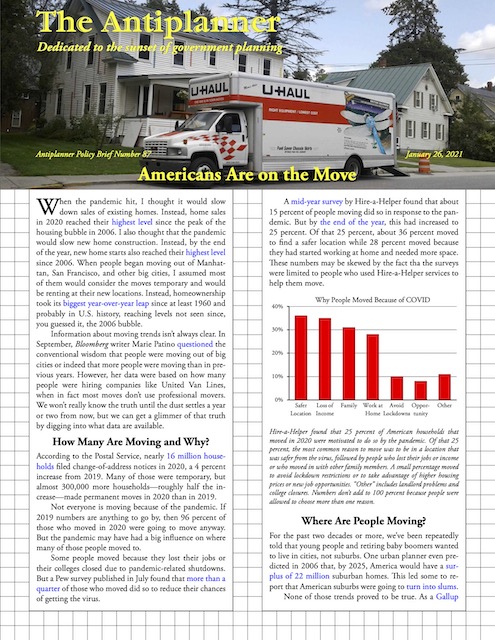State transportation issues during and after the pandemic will be the topic of an on-line forum next Wednesday, February 17. The Antiplanner will join several other experts, including Robert Poole, Baruch Feigenbaum, Marc Scribner, Wendell Cox, and Mariya Frost, to discuss highway, transit, and similar issues from noon to 1:30 pm Pacific Time (3:00 pm to 4:30 pm Eastern Time).
The forum is aimed at state policy think tanks, legislative staff, and other people who deal with state transportation issues agencies, budgets, and policies. Presentations will be based on Transportation and COVID-19, a group of articles published in December. More information and event registration are available from the Washington Policy Center.
Speaking of seminars, University of Oxford Professor Bent Flyvbjerg, noted expert on megaprojects, is holding an on-line class on Reference Class Forecasting. The projected cost of constructing the typical light-rail line rises by 40 to 50 percent between the initial cost estimate and project approval. The actual cost of constructing it rises another 40 to 50 percent between project approval and project completion. Continue reading











